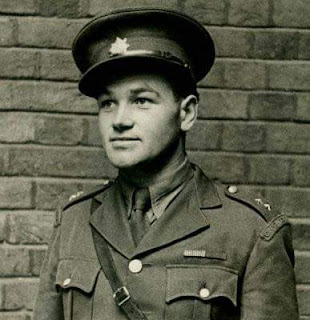Remembering Jozef Gabčík and Jan Kubiš - the “Czechoslovak heroes of anti-Nazi resistance”.
Remembering Jozef Gabčík and Jan Kubiš - the “Czechoslovak heroes of anti-Nazi resistance”.
Reinhard Heydrich was one of the most powerful men in Nazi Germany and was a principal architect of the Holocaust. With anti-German sentiment thought to be on the rise in Czechoslovakia, Heydrich was appointed acting Protector of Bohemia and Moravia and set up home in Panenské Břežany, 9 miles north of central Prague. He would often be brazenly driven around by his chauffeur in an open-top Mercedes.
Heydrich’s presence in Prague led to the birth of Operation Anthropoid, the only government-sponsored assassination of a senior Nazi leader during World War 2. Operation Anthropoid was planned by the head of the Czechoslovak intelligence services, and involved exiled Czechoslovak soldiers based in Great Britain. The soldiers chosen to participate in Operation Anthropoid received preparation and training by the British Special Operation Executive (SOE). Two of the paratroopers involved were Jozef Gabčík and Jan Kubiš, who would go on to play the major role in the assassination of Reinhard Heydrich.
On 28 December 1941, Gabčík and Kubiš, along with seven other soldiers from Czechoslovakia's army-in-exile in the United Kingdom were flown by the RAF from Halifax, England and left the plane by parachute, in drops in three separate areas. Gabčík and Kubiš moved to Pilsen to contact their allies, and from there on to Prague, where the attack was planned. They had several plans for how to carry out the assassination, with the final plan being agreed on an ambush on Heydrich’s open-top car.
On 27 May 1942, Heydrich was making his usual commute from his home to his headquarters at Prague Castle. It was on this journey that Gabčík and Kubiš waited, on a tight curve which would force Heydrich's car to slow down. As it slowed down and rounded the corner, Gabčík, who concealed his Sten submachine gun under a raincoat, dropped the coat and raised the gun, and, at close range, tried to shoot Heydrich. The gun jammed, meaning Gabčík could not shoot. Rather than continue driving, Heydrich ordered his driver to stop the car. This proved to be a fatal mistake, as it allowed Kubiš, who was not spotted by Heydrich or his driver, to throw a modified anti-tank grenade. In another unfortunate moment, he misjudged his throw. Instead of landing inside the Mercedes, the grenade landed against the rear wheel. Nonetheless, the bomb severely wounded Heydrich when it detonated.
Kubiš was able to escape on a bicycle, where he made his way to a local safe house. Gabčík embarked on a brief gunfight with Heydrich, until the latter seemed to collapse. Gabčík made an escape, despite being chased by Heydrich’s driver. Gabčík also made it to the safe house, both men believing the attempt had failed.
Heydrich was consequently taken to Bulovka Hospital, where he was treated for his wounds and appeared to be recovering. On 3rd June he collapsed and slipped into a coma. He died on 4th June, with the autopsy revealing he died of sepsis. This led to severe reprisals with Hitler personally suggesting that Himmler send SS General Erich von dem Bach-Zelewski to Prague. It is reported Hitler considered Zelewski to be even harsher than Heydrich. During the reprisals, more than 13,000 people were arrested, with estimates of 5,000 people being murdered.
The assailants initially hid with two Prague families and later took refuge in Karel Boromejsky Church, a church in Prague. Despite their attempts, German soldiers were no closer to finding the assassins, until a moment of betrayal gave the Germans the breakthrough they sought. Karel Čurda of the Out Distance sabotage group turned himself in to the Gestapo and gave up the names of the team's local contacts for the bounty of one million Reichsmarks. Čurda revealed the locations of several resistance safe houses, which were consequently raided by the Gestapo. Many resistance members were captured, tortured and later executed.
On June 18th 1942, 750 SS soldiers tracked Gabčík, Kubiš and other members of Operation Anthropoid to Saints Cyril and Methodius Cathedral, Prague. The men in the church put up a brave stand; they only had pistols, while the attackers had machine guns, submachine guns, and hand grenades. Eventually, the numerical advantage took its toll. Adolf Opálka and Josef Bublík were killed in the prayer loft after a two-hour gun battle, and Kubiš was reportedly found unconscious after the battle and died shortly after from his injuries. Gabčík, Josef Valčík, Jaroslav Švarc, and Jan Hrubý died by suicide, preferring to end their own lives rather than be killed or captured by Germans. There is a museum in the church crypt dedicated to them as national heroes.
The Footsteps of War team join others around the world in paying our respects to Jozef Gabčík, Jan Kubiš and the other paratroopers involved in Operation Anthropoid as we remember their bravery 80 years on.












Comments
Post a Comment